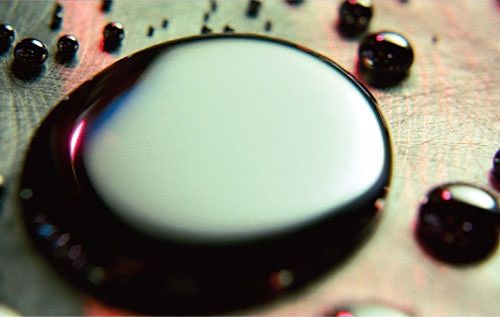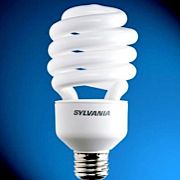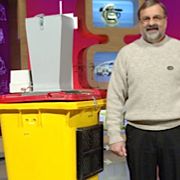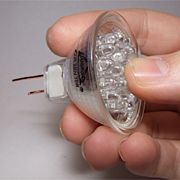The other day, Rob pointed me to an article on a topic which has been in the news quite a bit lately – the concern over the mercury contained in compact fluorescent (CFL) lamps. The original piece is here.
 That article – and many others – gives the reader a somewhat inaccurate impression of the situation. Here’s a brief look at the use of compact fluorescent lighting, including the safe disposal of broken or used bulbs.
That article – and many others – gives the reader a somewhat inaccurate impression of the situation. Here’s a brief look at the use of compact fluorescent lighting, including the safe disposal of broken or used bulbs.
What are Compact Fluorescent Lights (CFLs)?
 A CFL is essentially just a smaller version of the fluorescent tubes you see in many offices and supermarkets. The tubes are generally much slimmer, and twisted into a spiral or other compact design. The photo at left shows one of the more common varieties.
A CFL is essentially just a smaller version of the fluorescent tubes you see in many offices and supermarkets. The tubes are generally much slimmer, and twisted into a spiral or other compact design. The photo at left shows one of the more common varieties.
These lights have grown in popularity enormously over the past couple of years; mostly due to the fact that they consume far less power than the incandescent light globes we’ve all been using for decades. A low-wattage CFL will typically light the room as much as a high-powered incandescent equivalent.
The concern over mercury
Whilst they do use far less power than similar incandescent lights, CFLs require a little more attention when it comes to disposal. There are several differences between the two technologies, but the primary concern is over a single aspect of the CFLs :
CFLs contain a tiny amount of mercury.
The amount of mercury found in a CFL – even a broken one – is tiny (usually less than 4 milligrams), and extremely unlikely to cause a problem. To illustrate this, here’s a quick calculation based on a typical CFL in a medium-sized room (a child’s bedroom, if you like) :
a CFL containing 4mg of mercury breaks in a room containing 25m3 of air (a medium-sized room). The entire 4mg of mercury vaporises, resulting in an airborne mercury concentration of 0.16mg / m3. This level will fall rapidly, as air from outside / other areas of the house comes in to the room. In all likelihood, it will be at zero after an hour or so.
The US Occupational Safety and Health Administration (OSHA) standard (the level which is considered safe) is 0.05mg /m3 averaged over eight hours. Even if the air in the room (containing the broken CFL) takes 8 hours to be replaced, the level of mercury from the bulb is only a minuscule 0.02mg /m3. Well within the guidelines.
What to do when a CFL breaks
On the rare occasion when a CFL is broken, a little caution is necessary. Both the glass and the mercury need to be disposed of carefully. Here’s how :
- open any windows in the room itself, and elsewhere in the house
- if you have an air-conditioner or central heating system, switch it off
- clean up the broken glass carefully (avoid touching it with your skin, or vacuuming it up)
- wipe the area with a paper towel in order to mop up any remaining glass fragments, and mercury
- put the broken light, and the paper towel, in a plastic bag and take it to a recycling centre (hazardous waste section)
Leave the room. It’ll be back to normal in an hour or so.
Safe disposal of Compact Fluorescent Lights (CFLs)
 Although breakages are extremely rare, CFLs should still be disposed of carefully when they reach the end of their life (or are no longer required). Fortunately, there are a couple of ways to do just this.
Although breakages are extremely rare, CFLs should still be disposed of carefully when they reach the end of their life (or are no longer required). Fortunately, there are a couple of ways to do just this.
For used or unwanted fluorescent lighting, take a look at the Tube Terminator. This thing’s superb.
To see it in action, head over to The New Inventors site (it was shown on there last year). Although the demonstration focuses on the larger form of fluorescent lighting, an adapter is available for CFLs.
Alternately, take the light(s) to a recycling centre which handles CFLs. In the US, check out the Lamp Recycle and ALMR sites.
An alternative to Compact Fluorescent Lights (CFLs)
 If you’re looking for a low-energy alternative to the compact fluorescents, check out the current generation of LEDs. These make use of yet another technology, require even less power to run and are simpler to dispose of.
If you’re looking for a low-energy alternative to the compact fluorescents, check out the current generation of LEDs. These make use of yet another technology, require even less power to run and are simpler to dispose of.
LEDs are not yet considered inexpensive, but prices are falling rapidly. If you haven’t taken a look at them in the past few months, it’s well worth your time. You’ll save a considerable amount of money over their lifetime.
Final thoughts on CFLs and mercury
Whilst CFLs do contain a tiny amount of mercury, it’s nowhere near the levels that some news reports would have you believe. As with many consumer items, all that’s required is a little common sense.
Comments are closed.